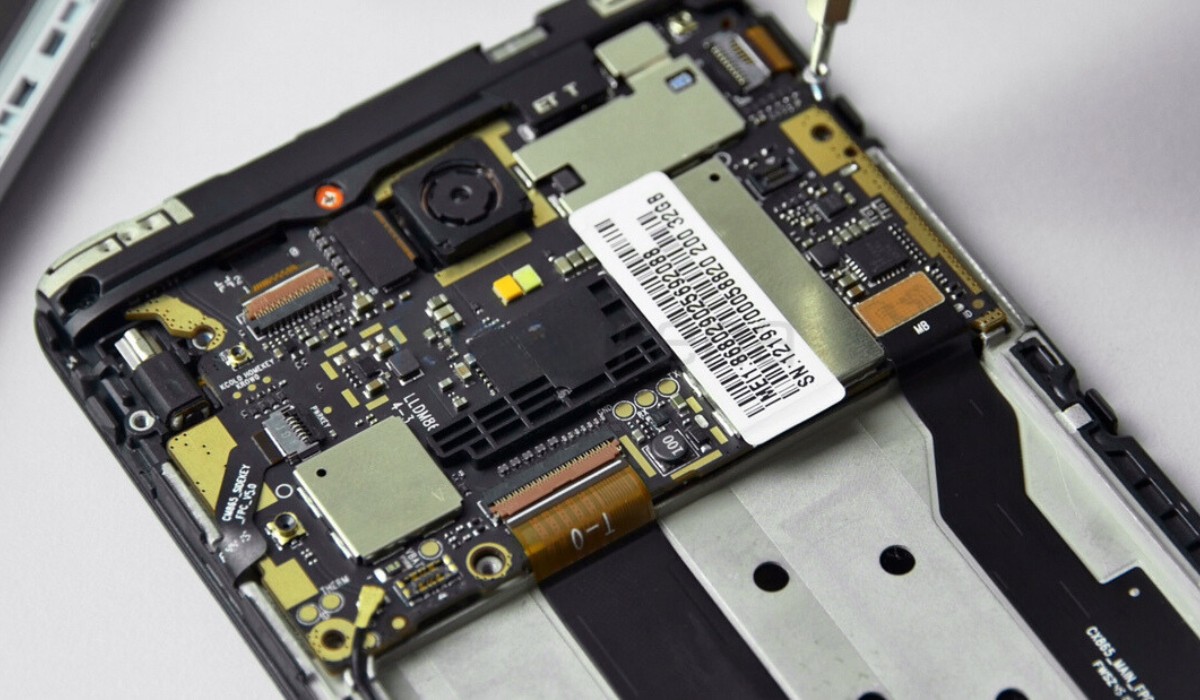Introduction
The Redmi 4 is a remarkable device that has garnered a loyal following due to its impressive features and affordable price point. However, for tech-savvy users seeking to unlock the full potential of their Redmi 4, the concept of "root access" holds significant allure. Rooting a Redmi 4 device allows users to gain privileged control over the Android operating system, enabling them to customize the device to a greater extent than what is typically allowed by the manufacturer.
Rooting a Redmi 4 device grants users elevated access to the system files and settings, empowering them to install custom ROMs, optimize performance, and access a plethora of advanced features. This process essentially provides users with the freedom to tailor their device to their specific preferences, unleashing a new realm of possibilities.
As we delve into the world of rooting, it's important to understand the advantages and potential risks associated with this practice. By exploring the benefits and drawbacks of rooting a Redmi 4, users can make informed decisions about whether to embark on this journey. Additionally, we will provide a comprehensive guide on how to root the Redmi 4, ensuring that users have the necessary knowledge to proceed with confidence.
Join us as we embark on an enlightening exploration of rooting the Redmi 4, uncovering the potential for enhanced customization and performance optimization. Let's delve into the world of root access and discover the myriad opportunities it presents for Redmi 4 users.
What is Root Access?
Root access, often referred to as "rooting," is the process of obtaining privileged control over the Android operating system. In essence, it grants users administrative access to the core system files and settings, allowing them to make modifications that are typically restricted by the device manufacturer. This elevated level of access enables users to delve into the inner workings of the device, providing the freedom to customize and optimize various aspects of the Android experience.
By gaining root access, users can unleash the full potential of their Redmi 4, opening up a world of possibilities for customization and performance enhancement. With this elevated level of control, users can install custom ROMs, which are modified versions of the Android operating system. These custom ROMs often offer enhanced features, improved performance, and a greater degree of customization compared to the stock operating system.
Furthermore, root access allows users to remove pre-installed bloatware, optimize system performance, and access advanced settings and features that are typically hidden from standard users. This level of control empowers users to tailor their device to their specific preferences, creating a truly personalized Android experience.
It's important to note that rooting a device does come with certain risks and implications, which we will explore in detail later in this article. However, for users seeking to push the boundaries of customization and performance optimization, root access represents a gateway to a new realm of possibilities.
In summary, root access is a powerful tool that grants users elevated control over their Android device, enabling them to customize, optimize, and personalize their Redmi 4 in ways that are not possible with standard user privileges. This concept forms the foundation for unlocking the full potential of the device, paving the way for a truly tailored and enhanced user experience.
Benefits of Rooting Redmi 4
Rooting a Redmi 4 device unlocks a myriad of benefits that cater to the preferences and requirements of tech-savvy users. By gaining privileged access to the Android operating system, users can harness the full potential of their device, opening up a world of customization and performance optimization. Here are the key benefits of rooting the Redmi 4:
-
Customization: Root access empowers users to install custom ROMs, enabling them to completely overhaul the look and feel of their device. Custom ROMs often offer a wide range of customization options, including unique themes, advanced system tweaks, and personalized user interfaces. This level of customization allows users to tailor their device to their specific preferences, creating a truly unique and personalized Android experience.
-
Performance Optimization: Rooting a Redmi 4 device provides users with the ability to optimize system performance by removing bloatware, tweaking system settings, and utilizing performance-enhancing tools. This can result in improved speed, responsiveness, and overall system stability, enhancing the user experience and ensuring that the device operates at its full potential.
-
Access to Advanced Features: Root access unlocks access to advanced features and settings that are typically hidden from standard users. This includes the ability to utilize powerful system management tools, customize system-wide settings, and access features that are not available on unrooted devices. This expanded functionality provides users with greater control over their device, allowing them to explore and utilize advanced capabilities that are not accessible through standard user privileges.
-
Enhanced Battery Life: With root access, users can employ battery-saving tweaks and optimizations to extend the battery life of their Redmi 4. This can include the ability to underclock the processor, manage background processes more effectively, and utilize battery-saving apps and tools that are not available to unrooted devices. By implementing these optimizations, users can enjoy longer battery life and improved overall efficiency.
-
Ad-Blocking and Network Control: Rooting a Redmi 4 device enables users to block ads system-wide and exercise greater control over network settings. This includes the ability to block intrusive ads within apps and browsers, as well as the ability to manage network access for individual apps. These capabilities provide users with a more streamlined and controlled online experience, free from unwanted advertisements and with enhanced control over data usage.
In summary, rooting a Redmi 4 device offers a wealth of benefits, ranging from extensive customization and performance optimization to access to advanced features and enhanced battery life. These advantages cater to users who seek to push the boundaries of customization and performance, unlocking the full potential of their device and creating a truly tailored and optimized Android experience.
Risks of Rooting Redmi 4
While the prospect of gaining root access to the Redmi 4 presents a host of enticing benefits, it is crucial for users to be aware of the potential risks and implications associated with this process. Rooting a Redmi 4 device carries certain inherent risks that can impact the device's security, stability, and warranty status. It is essential for users to carefully consider these risks before proceeding with the rooting process.
-
Security Vulnerabilities: By gaining root access, users expose their device to potential security vulnerabilities. Elevated privileges can be exploited by malicious software or unauthorized users, potentially compromising the security of the device and the user's personal data. It is essential for rooted devices to be equipped with robust security measures to mitigate these risks.
-
Voiding Warranty: Rooting a Redmi 4 device typically voids the manufacturer's warranty. This means that users may no longer be eligible for official support or warranty coverage for their device. In the event of hardware or software issues, the manufacturer may refuse to provide assistance or service for a rooted device.
-
Bricking the Device: The process of rooting a device involves making significant modifications to the system files and settings. If not performed correctly, this can lead to a situation known as "bricking," where the device becomes inoperable or stuck in a boot loop. This can render the device unusable and may require advanced technical expertise to resolve.
-
Loss of Over-the-Air Updates: Rooted devices may lose the ability to receive over-the-air (OTA) updates from the manufacturer. These updates often include important security patches, bug fixes, and feature enhancements. Without access to OTA updates, rooted devices may become more susceptible to security vulnerabilities and miss out on the latest improvements to the Android operating system.
-
Risk of Data Loss: The process of rooting a device involves making changes to the system partition, which can potentially result in data loss if not executed carefully. Users should back up their important data before attempting to root their Redmi 4 to mitigate the risk of data loss during the rooting process.
In summary, while rooting a Redmi 4 device unlocks a wealth of customization and performance benefits, it is essential for users to weigh these advantages against the potential risks. Security vulnerabilities, warranty implications, the risk of bricking the device, loss of OTA updates, and the potential for data loss are important considerations that users should carefully evaluate before proceeding with the rooting process. By understanding and acknowledging these risks, users can make informed decisions regarding the root access of their Redmi 4, ensuring that they are prepared for the implications of this advanced customization process.
How to Root Redmi 4
Rooting a Redmi 4 device requires careful consideration and a methodical approach to ensure a successful and seamless process. Before proceeding with the rooting process, it is crucial for users to understand the potential implications and risks, as well as the steps involved in gaining root access to their device. Here is a comprehensive guide on how to root the Redmi 4:
Step 1: Backup Your Data
Before initiating the rooting process, it is essential to back up all important data stored on the Redmi 4. This includes personal files, photos, videos, and any other data that users wish to preserve. By creating a comprehensive backup, users can safeguard their data in the event of any unforeseen issues during the rooting process.
Step 2: Enable Developer Options
To begin the rooting process, users must enable the Developer Options on their Redmi 4. This can be done by navigating to the device's Settings, selecting About Phone, and tapping on the Build Number multiple times until the message "You are now a developer" appears. This action unlocks the Developer Options in the device settings.
Step 3: Enable USB Debugging
Within the Developer Options, users should enable USB debugging to allow the device to communicate with a computer during the rooting process. This setting can be found under Developer Options and should be enabled to facilitate the connection between the Redmi 4 and the computer.
Step 4: Choose a Rooting Method
There are various methods and tools available for rooting the Redmi 4, each with its own set of instructions and requirements. Users can choose from popular rooting tools such as Magisk, SuperSU, or KingoRoot, among others. It is important to research and select a reliable and trusted rooting method that is compatible with the Redmi 4 and the user's specific requirements.
Step 5: Follow Rooting Instructions
Once a rooting method has been selected, users should carefully follow the specific instructions provided by the chosen rooting tool or method. This typically involves connecting the Redmi 4 to a computer, running the rooting software, and following the on-screen prompts to initiate the rooting process. It is crucial to adhere to the instructions provided by the rooting tool to ensure a successful and safe rooting experience.
Step 6: Verify Root Access
After the rooting process is complete, users can verify the successful acquisition of root access by using root checker apps available on the Google Play Store. These apps can confirm whether the Redmi 4 has been successfully rooted and is now operating with elevated privileges.
By following these steps and exercising caution throughout the rooting process, users can successfully gain root access to their Redmi 4, unlocking a new realm of customization and performance optimization. It is important to approach the rooting process with careful consideration and awareness of the potential risks, ensuring that users are well-prepared for this advanced customization endeavor.
Conclusion
In conclusion, the concept of root access for the Redmi 4 presents a compelling opportunity for users to unlock the full potential of their device. By gaining privileged control over the Android operating system, users can delve into a realm of advanced customization, performance optimization, and access to a myriad of features that are typically beyond the reach of standard user privileges.
The benefits of rooting a Redmi 4, including extensive customization, performance optimization, access to advanced features, enhanced battery life, and ad-blocking capabilities, cater to the preferences of tech-savvy users seeking to push the boundaries of their Android experience. These advantages underscore the potential for users to tailor their device to their specific preferences, creating a truly personalized and optimized user experience.
However, it is essential for users to carefully consider the risks associated with rooting, including security vulnerabilities, warranty implications, the risk of bricking the device, loss of OTA updates, and the potential for data loss. By acknowledging these risks and approaching the rooting process with caution and awareness, users can make informed decisions regarding the root access of their Redmi 4, ensuring that they are prepared for the implications of this advanced customization process.
The comprehensive guide on how to root the Redmi 4 provides users with a methodical approach to initiating the rooting process, emphasizing the importance of data backup, enabling developer options and USB debugging, selecting a reliable rooting method, and following specific instructions to ensure a successful and safe rooting experience. By following these steps and exercising caution throughout the rooting process, users can embark on the journey of gaining root access to their Redmi 4 with confidence and preparedness.
Ultimately, the decision to root a Redmi 4 device rests on the user's preferences, technical proficiency, and willingness to embrace the potential benefits and risks associated with this advanced customization endeavor. Root access represents a gateway to a new realm of possibilities, empowering users to tailor their device to their specific preferences and unlock a truly personalized and optimized Android experience.

























